Having just bought a shiny new 4WD, it seemed rude not to take it out somewhere. Up until now, we had been using hire cars which restricted us to the state of Australian Capital Territory. Since the ACT is only about 50km across, we had found this somewhat limiting; now, with our very own vehicle, we could venture into neighbouring New South Wales. Hurrah!

New toy demands attention
The plan was to set out after work from Canberra in an easterly direction until we hit the sea, then to follow the coast southward for an unspecified distance before turning back inland and then finally north back up to Canberra, a long weekend’s rectangular journey in the south-eastern corner of New South Wales (and indeed of Australia).
Once out onto the Kings Highway, just across the state border, we encountered our first examples of Australian Sign Humour: enormous billboards for a Bungedore turf grower stating such gems as “Our Grass is Legal”, and “The Secret of a Good Root is in the Bedding”. Onward, though, to the coast.
Batemans Bay
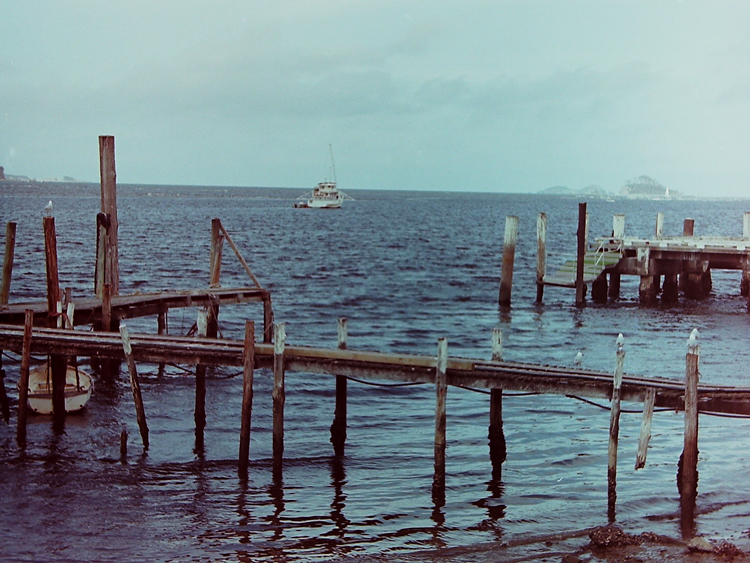
Looking out to sea from Batemans Bay
Batemans Bay is, frankly, a tourist and retirement resort. It does, however, occupy a lovely stretch of coastline, and is home not only to a huge fleet of pelicans, but also to a particularly good fish and chip shop. Positioned on stilts in the waters of the bay itself, the shop has mooring for its own fishing trawler at one end, a central curtained area where the fish are gutted and prepared, and a scattering of tables and a door to dry land and passing customers at the other. It is difficult to see how you can buy fish that are any fresher. The blackboard tells you what they caught that morning, and whatever it is, it can get battered and fried. As poms accustomed to cod and chips, we were a little surprised to find battered yellow-fin tuna on the menu; and very succulent it was indeed.
However, night was falling, and we needed somewhere to stay. A little way down the coast was the town of Moruya, and after checking into a convenient motel, we ventured out to see what it had to offer. The answer, it appeared, was very little. It was only early evening, but everything was closed, apart from a couple of pubs and a Chinese restaurant. Undaunted, we popped in for a nice meal washed down with decent Australian wine, and headed back to the motel.
The whole of that eastern seaboard is littered with National Parks. Not only do the enormous Morton, Budawang, Dua and Wadbilliga parks form a thick green belt some thirty kilometres inland, but also the actual coastline itself is almost all protected environment. Once heavily logged, the government has tried very hard to maintain these fertile forests, criss-crossed by numerous dirt tracks leading apparently to nowhere but suddenly emerging onto spectacular headlands or winding their way between the enormous trees themselves.
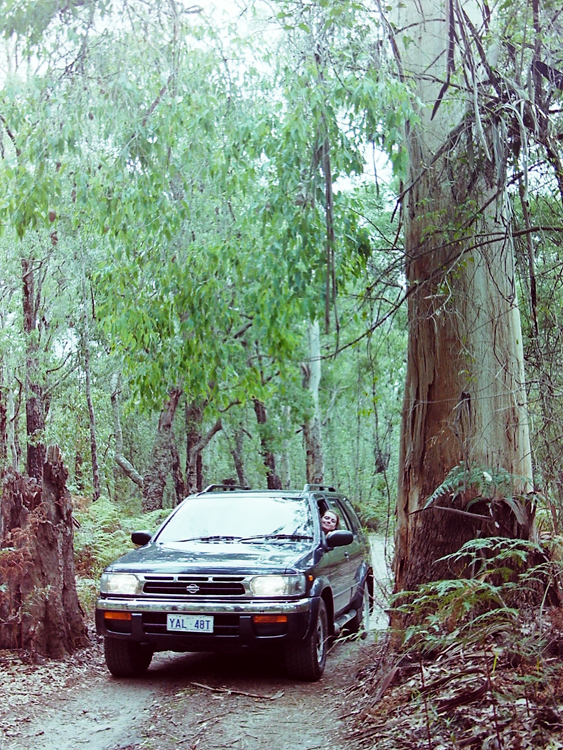
Forest track 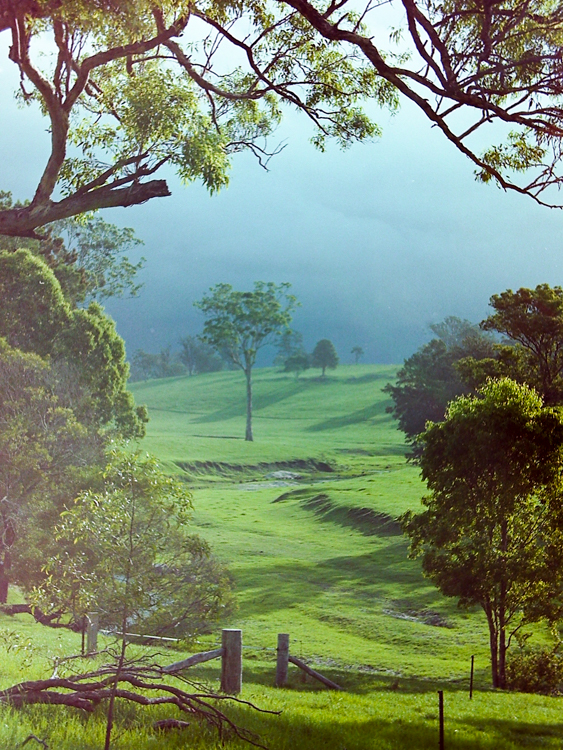
Approaching Eden
We spent the day bouncing randomly along these tracks, never knowing where we were going but always sure that the next view would be as wondrous as the last, passing names steeped in probably forgotten history: Potato Point, Mystery Bay, Disaster Bay; until finally we fetched up in Bega.
Bega
We’d figured that since Bega was quite a large town with some local industry, there might be a little more in the way of nightlife. However, after hopefully walking up and down the main drag a few times, we came to realise that there were only a couple of pubs and no restaurant at all. One of the pubs, however, advertised food, so we wandered in and found that along with our pints we could order some pretty decent Chinese cooking, so we sat down and tucked in.
The meal was very nice, but after a while we realised that the eatery was already closing, and we had now exhausted the cultural delights of Bega. Another beer, and out into the outside world.
An enormous electric storm blew up. Great sheets of lightning hurled themselves across the darkened skies. Forks set out in three directions at once from a single locus, pounding into cloud-heads and into the ground. We stood in the motel car park, awestruck. You really don’t get storms like this in Europe, especially without any rain.
Eden and the Whaling Museum
In the morning, with dark clouds still louring overhead, we headed on down the coast until, topping a rise, we were confronted by golden columns of sunlight pouring through a ragged tear in the cloud layer, illuminating the little town of Eden. Immediately we could see how it got its name. We were in the middle of one of Australia’s worst droughts, but here all was a promised land of lush and green. Apart from the heat, we could have been in the original South Wales rather than its eponymous antipodean counterpart – although, to be sure, there is some historical doubt whether Cook, who named the area, had ever actually visited Wales. I like to think, though, that there was a Welshman in his crew who looked out and saw a vision of home.
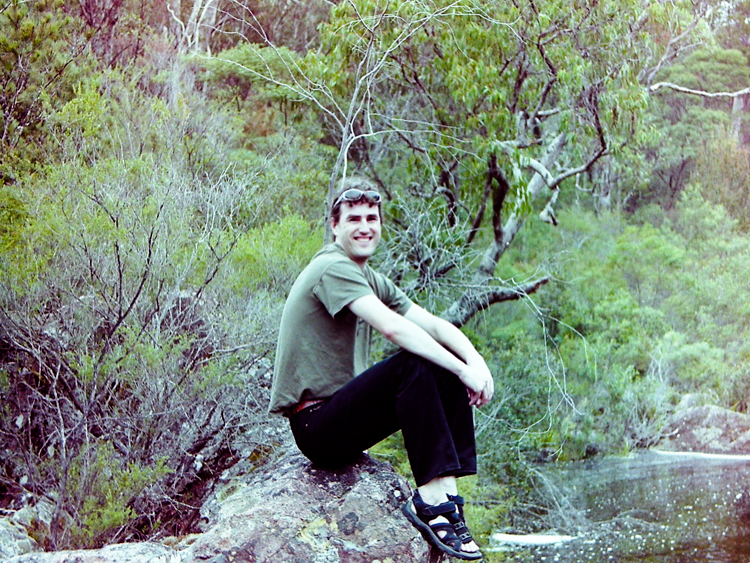
Happy in the bush
Eden was once considered as a suitable site for Australia’s capital city, in a move to restart its then moribund economy. For some fifty years it had enjoyed the status of Australia’s premier whaling centre, almost the country’s sole source of whale meat and products until the coming of offshore factory ships and a decrease in the need for whale products.
The families that ran the whaling operations were greatly dependent on a pack of local killer whales. These orcas would round up other whales and herd them into the bay. Then their leader, Old Tom, would leap up and down in the water outside the whalers lookout, until the men noticed and got their boats out and rowed with their harpoons to the luckless prey. Occasionally in his excitement, Old Tom would despair of the whalers’ slow rowing speed, and would grab hold of the painter and tow them out.
Then, once the target had been harpooned and killed, the whalers would buoy it and leave it overnight. Old Tom and his pod would just take the lips and tongue, and leave everything else for the men in the morning.
Eventually Old Tom died, and a local landowner built a museum to house his skeleton. This museum has grown somewhat organically into a fascinating exhibition accommodating everything from whaling to local tree-felling to stories of the sea, but the central piece is still Old Tom himself. If you look at his teeth, you can clearly see where they have been worn away by pulling on the harpooners’ tow ropes.
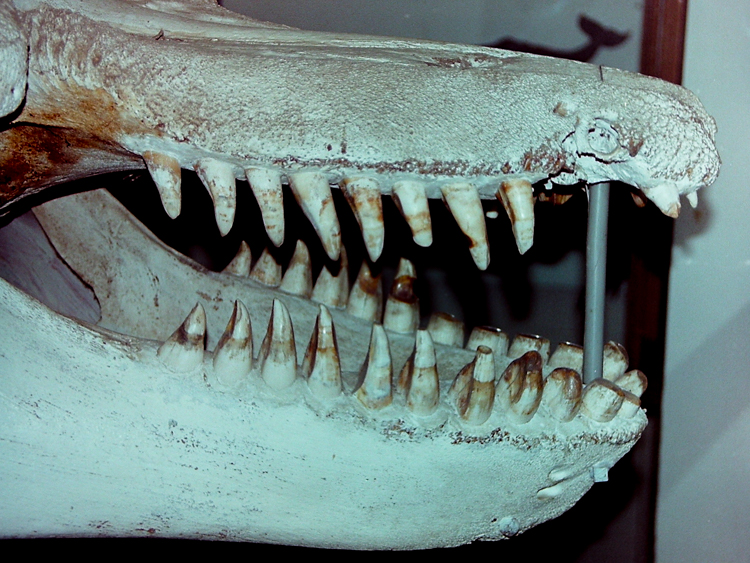
Old Tom’s worn teeth
Australia's Strangest Shipwreck Saga A story from the Eden archives, confirmed by Lloyds of London. On the 16th October 1829, the schooner Mermaid left Sydney bound for Western Australia. Four days later, while lying becalmed in the Torres Straits, an unexpected gale blew her onto reefs bursting her hull. The twenty-two people aboard were marooned on some rocks for three days until rescued by the barque Swiftsure. Five days later, the Swiftsure was caught in a strong current off New Guinea and was wrecked on rocks. All hands, including those rescued from the Mermaid, made it to land. Eight hours later they were all rescued by the schooner Governor Ready, which was already carrying 32 people but which managed to cram the other two crews aboard. Within three hours, the timber cargo caught fire and the combined crews took to the lifeboats. The cutter Comet picked them all up without loss of life. A week later, the Comet ran into a squall that snapped her mast. Her crew took the only serviceable boat, leaving the formerly rescued crews, who they regarded as being jinxed, to their fate. For eighteen hours the survivors fought off sharks as they clung to the wrecked ship, but they all survived to be rescued by the packet Jupiter. By a strange coincidence, a passenger on this last ship was an elderly lady from Yorkshire who was on her way to Australia to seek her son who'd been missing for fifteen years. She found him amongst the survivors - he was a crewman from the Mermaid, the first of the vessels wrecked.
Cooma
Westwards, then, into the setting sun, along a dirt track connecting to the Monaro Highway, and then northward to Cooma, a mere hop skip and a jump from the southernmost borders of ACT. A little sensitive to the fact that most of the towns we were passing could justly be described as one-horse, and a little tired of Chinese food, we’d set on Cooma as our destination because it is a major tourist area in the ski season. Surely here there would be some night-life. There was, in fact, a tourist centre, and we went in and explained our plight.
The woman scratched her head. A restaurant? She took us outside, and pointed at the building next door, indisputably a restaurant, but just as indisputably closed. She shrugged.
Perhaps one of the motels did food? We took directions to the largest, parked in relief under the huge RESTAURANT OPEN sign, and checked in. When could we eat? we asked. The young Canadian girl (“I married an Australian so I could move to Sydney, and we ended up in this godforsaken place”) shook her head. Their restaurant was closed. She rang around some of the other motels, but no, their restaurants were all closed too. Then she brightened. “If you cross the road, over by the ski shop, in a few moments the Chinese will be open. Best restaurant in town.”